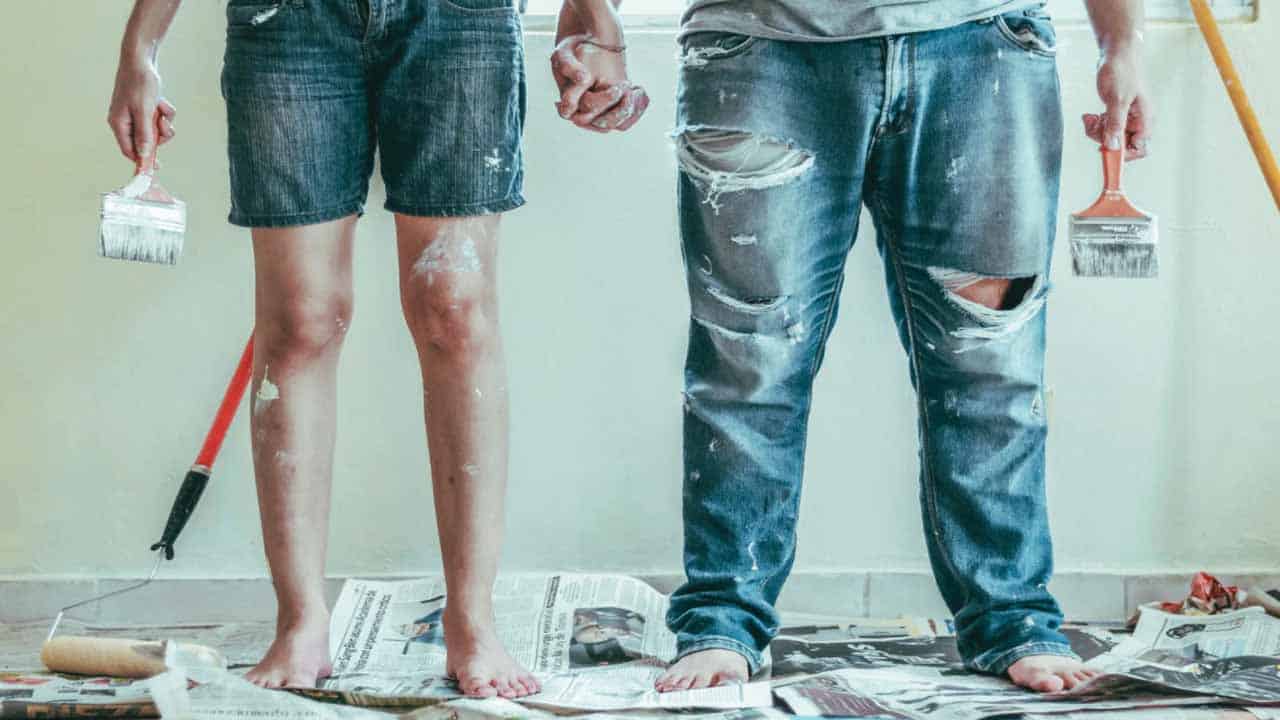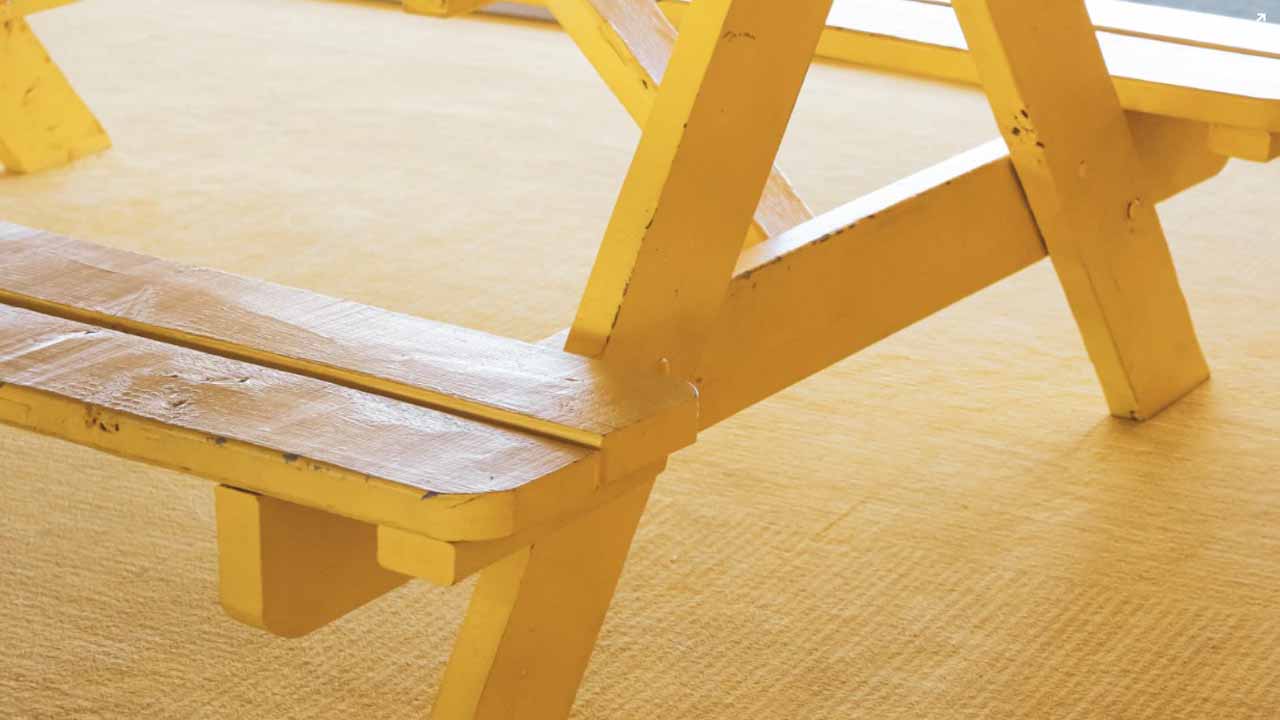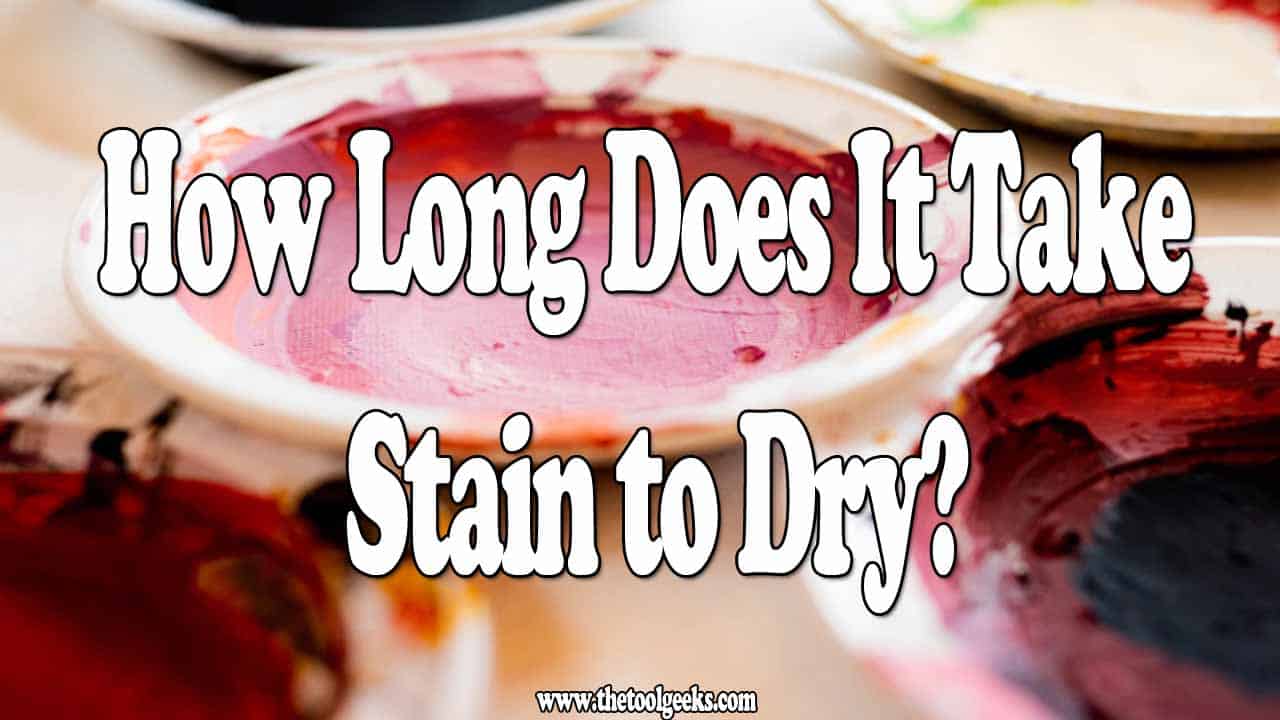How Long Does It Take Stain to Dry?
TheToolGeeks.com is a participant in the Amazon Services LLC Associates Program and other affiliate advertising programs. We may earn from qualifying purchases. (Learn More).
Stains are commonly used in woodworking. To stain a surface means to apply coats of the required paint or finish on a surface.
Stain is popularly used on shelves, doors, windows, floors, furniture, and the likes. A well-applied stain will improve the look of a surface while giving it a protective coat that makes the wood last longer.
As you have probably guessed, there are different types of stains. Each with its unique features and before you pick out a stain for your wooden surface, one main concern is how long does it take stain to dry?
It takes between 12 hours and 48 hours (2 days) for the stain to fully cure or dry. On average, it takes about 24 hours (a day) for the freshly applied stain to fully dry. The time frame required for a stain to dry depends on several factors.
So, what are these factors that affect a stain’s drying time, and how long does it take different stains to dry?
Let’s take a closer look.
Related Read — How to Make Paint Dry Faster?Jump To Page Contents:
How Long Does It Take Stain to Dry?

Water-based Stain or Paint
The water-based stain also referred to as acrylic paint has the fastest drying period. If you want a stain that dries quickly, water-based paint will be your best option.
Water-based paint is a stain that uses water as the solvent. After application, the water evaporates from the stains coating leaving the stain to dry and harden within a few hours. Since water is the solvent, it is quickly evaporated.
If you have ever noticed a stain that was dry to touch within an hour after its application, the stain is most likely water-based.
Dry to touch means you can touch the paint stain without smearing it though it hasn’t fully cured. It takes between about an hour for the water-based stain to dry to touch and it takes between 3 hours and 24 hours for the water-based stain to fully cure.
Though water-based paint dries quickly, it is not always the first choice for painters especially when they want to stain wood outdoors.
This is because water-based paint dries quickly and sometimes the stain dries too quickly and this can affect the uniformity of the stain. To rid this problem, painters usually use solvents that dry slowly like lacquers so they can achieve an even result.
Related Read — Best Sprayer For Staining FencesOil-based Stain or Paint
The oil-based stain is perhaps one of the most commonly used stains for wood and it doesn’t dry quickly. It takes between 12 hours and 48 hours for the oil-based stain to fully cure. On average, it can take a day (24 hours) for the oil-based stain to cure properly.
The reason for the lengthy time is because oil-based stains as you have probably guessed do not use water as the solvent. The stain uses oil as the solvent or vehicle. This oil can be natural or synthetic. Regardless of the type of oil used in the stain’s formula, one thing is for sure. It would take a while for the stain to dry because it takes a while for the solvent to leave the coating.
It can take about 2 hours for the oil-based stain to dry to touch and over 24 hours before you can apply a finish on the stain. Another reason oil-based stain takes longer to dry is that the stain adds a glossy sheen as a protective shield to the wood.
Related Read — Water vs Oil-Based PaintGel-based Stain or Paint
Gel-based paint is not the most common wood stain out there but it can go toe to toe with other wood stains. This is because the stain has a jelly-like texture which means it doesn’t drip and can be applied easily on the surface.
When it comes to drying, gel-based paint is one of the slowest stains to dry. It even takes a longer period than oil-based stain so if you want a quick job, the gel-based stain isn’t for you. It can take about 6 hours for the stain to dry to touch and well over 48 hours for the stain to completely cure.
Gel-based stains are usually stirred and used directly from the can though sometimes other compounds and minerals are added.
Perhaps the biggest advantage of gel-based paint is that it doesn’t require you to sand the surface to perfection. Due to the thick texture, a light sanding is just needed and the stain will take care of the rest.
Lacquer Stain or Paint
Lacquer stain is another popular choice for wood. Lacquer stain dries very quickly due to the presence of different chemicals and solvents like xylene and toluene that are included in its formula. Lacquer stain is usually dry enough for another coating within minutes. This means you can apply multiple coats of lacquer stain easily.
Though lacquer stain dries quickly, it has a huge downside. The chemicals and solvents used in its formula produce strong scents that can be offensive. So if you want to use this stain, ensure to keep your hands covered and use breathing protection so you don’t inhale the toxic fumes.
Related Read — Best Sprayer For Lacquer PaintVarnish Stain
Varnish stain is another popular stain for wood. It is sometimes confused with oil-based stains because both stains have some similarities. Varnish stain uses a binder like polyurethane. In terms of drying, the varnish stain dries pretty quickly.
The drying time is a tad similar to water-based paint. The stain also hardens quickly so the time required for it to fully cure is also not much. Usually, varnish dries fully in less than a day.
The downside to varnish stain is that it is relatively more difficult to work with than other stains. After applying varnish, you will most likely notice brush marks and stripes on the surface. This stain is commonly used as a top coat after staining the wood with another stain.
Related Read — How Long Does It Take Primer to Dry?Metalized Dye Stain or Paint
Metalized dye is also called metal-complex dye stain. The stain is popularly used as a finish and it dries super fast. One major reason for the fast drying time is because the stain unlike many others can be applied with a sprayer.
If you want a stain that dries quickly, you can go for the metalized dye stain. The stain can also be thinned with different stain thinners ranging from alcohol to water and lacquer.
It is also very easy to apply not only because it can be thinned with virtually any paint thinner but also because it can be sprayed directly from the container.
The downside to the metalized dye stain is that it fades quickly, especially under ultraviolet lights. Though some brands now last longer, the stain cannot compete with many others when it comes to durability.
Other worthy mentions include water-soluble dye stain which also dries quickly but fades quickly too and walnut finishes which are made from a combination of walnut-hull powder and other substances. Walnut finishes also cure in less than a day provided all the needed conditions are met.
What Factors Influence a Stain’s Drying Time?
Paint stain popularly referred to as stain takes a while to dry after application. The time frame required for the stain to dry depends on different factors. Let’s check out these factors.

The Type of Stain
The biggest factor that determines how long it takes for a stain to dry is the type of stain used. There are different types of stains used in woodworking.
There are oil-based paint, water-based stain, chalky stain, gel-based stain, and the likes. The type of stain used will determine the time it takes for the stain to dry. For instance, oil-based stains take a longer period to dry than water-based paint.
The brand of paint stain you use also determines the drying period. Different brands have different drying periods. The time frame required for the stain to dry is usually written on the container of the stain.
The Temperature of the Room or the Environment
Another determinant of the time it takes for the stain to dry is the temperature of the environment or the temperature of the room. Stains dry when the solvent used in the stain’s formula evaporates from the paint’s coating. The solvent can only evaporate if certain conditions are met with room temperature.
The paint will dry faster in a dry room than in a moist room. This is why professional painters usually advise DIYers to ensure the walls and room generally is dry before they stain.
The right temperature is between 50 degrees Fahrenheit and 90 degrees Fahrenheit. The best temperature to stain wood is 70 degrees Fahrenheit. You should also work in a well-ventilated environment so air can be properly circulated.
Humidity
Humidity also affects a stain’s drying period. If you stain a surface in a moist room, it would take a longer time for the stain to dry as opposed to if the stain was applied in a dry room.
This is because moisture will affect the stain’s curing (or drying) process. This is why stains generally take longer to get dry in places like the bathroom, laundry room, and kitchen than in the living room.
The temperature of the bathroom, kitchen, and laundry room is usually warm and moist because water and heat are constantly used in these places.
In the kitchen, for instance, you cook and as you cook, steam (water vapor) is trapped in places like the ceiling and walls. The trapped water vapor makes the room feel moist and not dry so it will take longer for the stain to cure.
The Weather
Another factor close to the temperature of the room is the weather. If you stain during the dry season, the stain will get dry quickly. Staining during the dry season is usually advised. The stain will get dry enough to be touched within a few hours and curing might even take less than a day. This isn’t the same during the rainy season or the winter season.
For starters, the weather during the rainy and winter seasons is usually very cold and moist. This is due to the constant downpour of water and snow. The paint will take a longer time to dry during these periods as opposed to when the weather is dry.
Staining during the rainy or winter season is not ideal. This is because the weather will affect the curing process and you will most likely not arrive at the type of finish you envisioned. The walls are usually wet and the weather is usually cold. These conditions will ruin the stain after application.
Related Read — How to Strip Spray Paint From Plastic?The Type of Surface
Most people don’t know this but the type of surface the stain was used on also determines the time it takes the stain to dry.
Some surfaces absorb stain quicker than others due to the characteristics of the wood used in making the surface. Generally, furniture made from softwood will absorb stain faster than furniture made from hardwood.
If you applied the same stain on a piece of furniture made from pine wood and furniture made from maple wood at the same time, the stain on the pine wood furniture will dry faster than the stain on the maple wood furniture.
This is because hardwood like maple is usually dense and has closed grain. This not only makes it difficult to achieve a uniform stain but it also takes a longer period for the stain to dry because the wood absorbs stains very unevenly.
The furniture made from pine wood on the other hand will get dry quickly because the wood is usually porous meaning stain will be absorbed quickly.
The Time the Stain Was Applied
Another factor that determines how long it takes for the stain to dry is the time the stain was applied. Stain applied during the day dries faster than stain applied at night.
This is because the weather during the night is usually cooler than the weather during the day. So if you stain a surface at night, don’t expect it to dry at the same time as if you stained the surface during the day when the weather is usually hot.
The Basecoat and Topcoat Used
A factor that determines the time frame is the base coat and topcoat used. Basecoat is usually referred to as primer. The primer is applied to the surface before the stain.
Then, the topcoat is usually applied. Primer is used when staining porous surfaces to increase adhesion and improve the finish but there is a slight twist.
Some basecoats affect the ability of the wood to absorb the stain. If you use such primers, then it might take a few extra hours for the stain to fully dry.
The same goes for the topcoat. For instance, if you use an oil-based topcoat on a stain, it will take longer for the stain to fully dry because oil-based paint won’t dry quickly.
Though the basecoat and the topcoat sometimes affect a stain’s curing time, it is not in every case that both coats are used. Sometimes, the stain is applied directly without a basecoat or a topcoat.
Amazon and the Amazon logo are trademarks of Amazon.com, Inc, or its affiliates.

